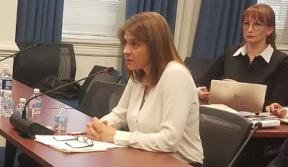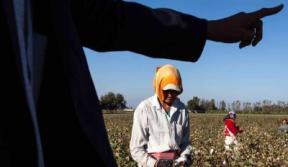- The List of Products Produced by Forced or Indentured Child Labor pursuant to Executive Order 13126 of 1999, which serves as a recommendation to federal procurement officers and policy makers, now identifies 29 products from 21 countries to be concerned about, and has proposed two new products and two new countries of concern. Read the full list here:http://www.dol.gov/ILAB/regs/eo13126/main.htm#List
- This year, the reports call special attention to hazardous labor, that is, work that is likely to cause significant and permanent injury to the child, such as blindness, deafness, loss of a limb, etc. The ILO estimates that of the 215 million children working around the world, 115 million of them work in hazardous environments.
These figures are not uplifting. However, much like finding a cure, the first step is to determine the diagnosis. To combat the WFCL we first need to identify where it’s happening. The fact that that these updated reports are able to identify more instances of child labor around the world means that we are getting closer to being able to prevent child labor from occurring. These reports serve as a tool to businesses, policy makers, procurement officers, and consumers for their sourcing or purchasing decisions.
Senator Tom Harkin (D, IA), who has been a champion for child-workers for over a decade, spoke at the event. It was Senator Harkin, along with Congressman Eliot Engel (D, NY), who first proposed legislation that would require chocolate companies to label their chocolate as child-labor-free. Unfortunately, this legislation was never passed, and as ILAB’s reports indicate, child and forced labor are still a concern for the cocoa industry in the world’s top-producing cocoa countries (Cameroon, Cote D’Ivoire, Ghana, Guinea, and Nigeria are all on the List of Products Produced by Forced or Indentured Child Labor).
In spite of the diagnosis made for the cocoa industry in West Africa more than 10 years ago, the problem persists. Why? There’s no easy answer but if I were granted two guesses they would be 1) the lack of enforceable legislation banning the use of child labor on cocoa farms and 2) poverty.
Senator Harkin addressed the relationship between poverty and child labor by sharing a quote said by one of his heroes, social worker Grace Abbott, “Child labor and poverty are inevitably bound together and if you continue to use the labor of children as the treatment for the social disease of poverty, you will have both poverty and child labor to the end of time.”
ILAB’s reports make it clear there is much work to be done all over the world to prevent child labor. At Green America, we are starting with cocoa. Our Raise the Bar, Hershey! campaign is calling on the country’s largest chocolate manufacturer to remove child labor from its ingredients list by switching to Fair Trade certification. Fair Trade is not a cure-all; it’s not a magic bullet. However, it is one way to identify and remediate child workers. It is also a way to guarantee sustainable wages to farmers and additional funds for community development projects so that over time communities can lift themselves out of poverty. To learn more about our campaign or to get involved please visit www.RaiseTheBarHershey.org


Comments
re: Department of Labor Releases New Reports on Child Labor
I can't help myself but to feel bad whenever I see or hear stories on child labor. I really pity children too young, bones too small to carry heavy loads. Where are the parents of these kids? Where's the government? This problem is felt worldwide an it is depressing to note that until now this dilemma is still existing. The very bottom line of this is POVERTY.